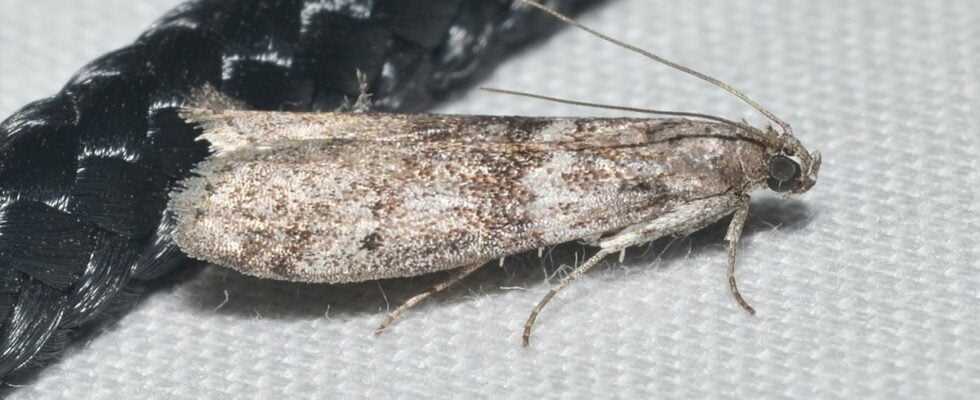It often begins with the discovery of small larvae at the bottom of a package of flour, pasta or rice. Food moths have taken up residence in your cupboards and have laid eggs in starchy foods. It is then important to act to get rid of it. Here are our tips.
What do food moths look like?
Above all, it is important to clearly identify whether it is the right insect. Food moths, also called Ephestia kuehniella, are small butterflies recognizable by their brownish wings folded over their bodies when they are not flying (see our photo at the beginning of the article). They often lodge in cupboards or under kitchen furniture, or even in poorly sealed food boxes and packages. These mites can lay more than 200 eggs which turn into larvae (1 to 2 cm) after two days to feed on the foods where they rest, mainly starchy foods, but also dried fruits. Although these larvae are not dangerous to health if ingested, food moths can proliferate rapidly if care is not taken.
Another point to know, food mites differ from clothing mites which attack fabrics. Physically very similar, clothes moths tend to have a whitish, grayish appearance.
check and discard invaded packages
As soon as you have spotted a moth or found larvae in a package, a check of all the food boxes present in your cupboards is essential. Empty everything and open each package to see if there is anything suspicious. If the package is slightly open or damaged, there is a good chance that moths have crammed in. The simplest solution is then to throw suspicious packets in the trash. Remember to lock them in a plastic bag tightly closed with a knot to prevent these pests from proliferating elsewhere.
inspect your cupboards carefully
Once all the boxes have been taken out and inspected, do not put them away. It is important to review the kitchen and its cupboards. Take a good look in every corner, under the shelves, but also on the floor and the ceiling, because an adult female or male can hide there and quietly return to nest in new packs. Do this step carefully before moving on to deep cleaning. Also take the time to bring a ladder or a step to check the top of the cupboards which would be inaccessible and especially invisible depending on your size.
perform a deep cleaning
If no parasite seems to be frolicking happily, another precaution is to be taken: that of cleaning. White vinegar or bleach (depending on your furniture) can be used to thoroughly clean all the walls and corners of the cupboards with a sponge.
Scatter cloves…
Clove is a particularly effective solution that acts as a natural repellent for food moths. You can get a box of them in the spice section of your supermarket and scatter small pinches of them in the four corners of the cupboards. The strong scent of cloves is not appreciated by these parasites which will tend to leave the area.
… Or opt for essential oils
Another interesting natural repellent, the essential oils of thyme, lavender, laurel, lemongrass or even mint can act because of their strong smell which remains pleasant for our nostrils, but is less so for these insects. If the problem persists, it will then be necessary to consider more radical solutions, but less respectful of nature, with pheromone traps which attract the males which remain glued to their paper.
Check the appearance of purchased packages
Last important point in order to prevent food moths from coming back, when you go to supermarkets or grocery stores, it is recommended to check the appearance of the packages (especially starchy foods) sold. Some badly closed or perforated are indeed likely to contain eggs, even moths which would have taken advantage of the warehouses where the food is stored to take up residence there.
